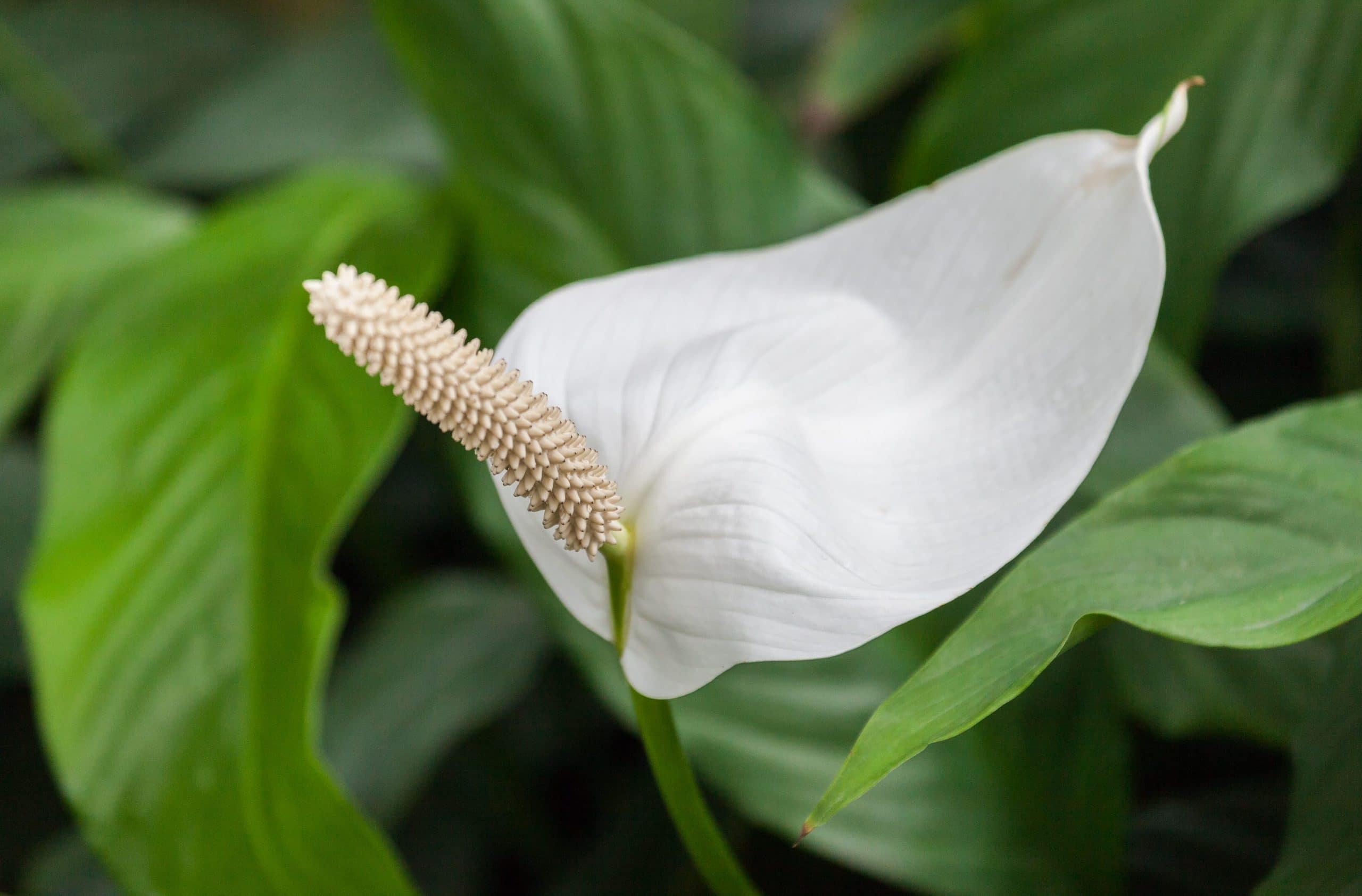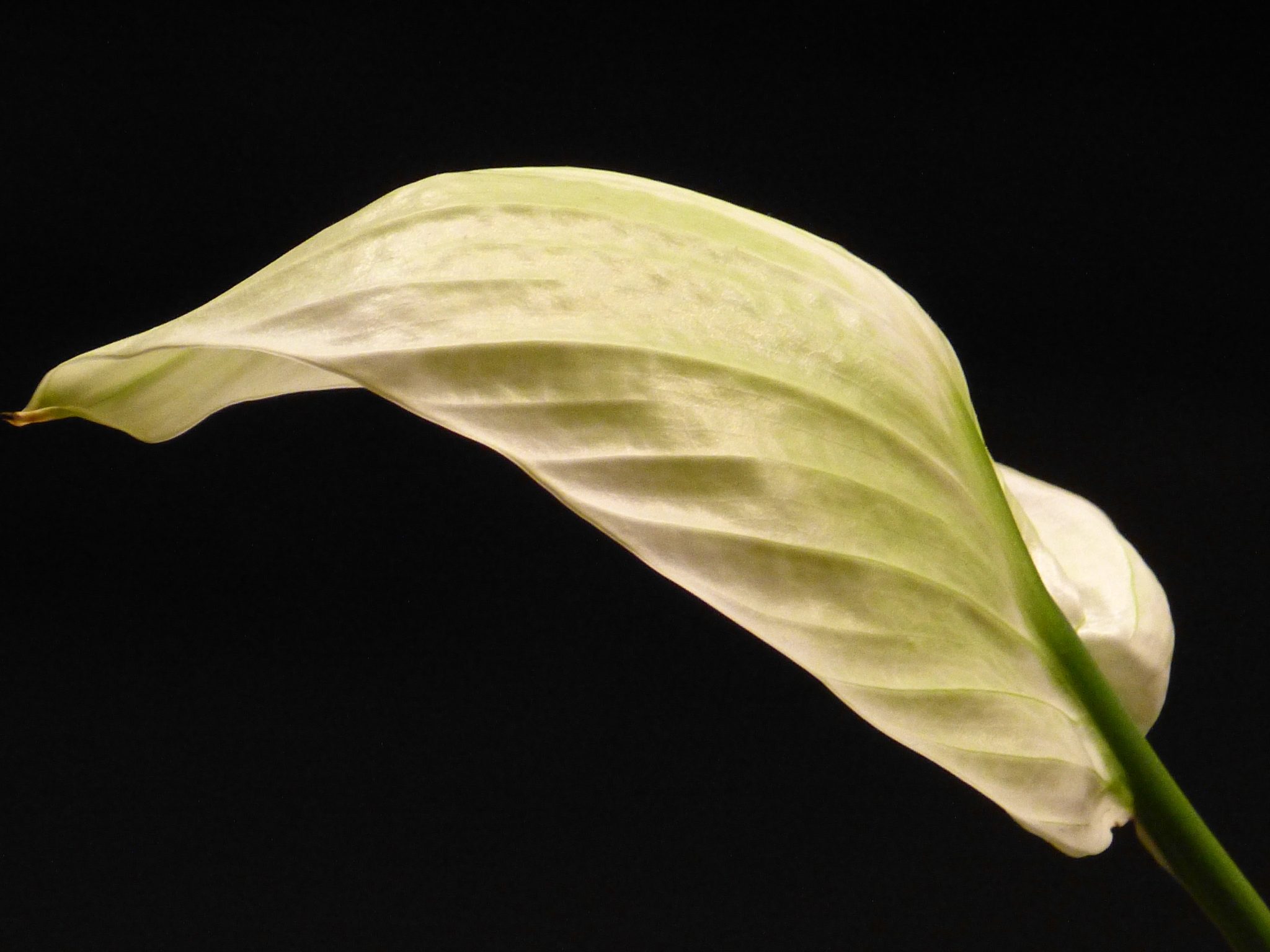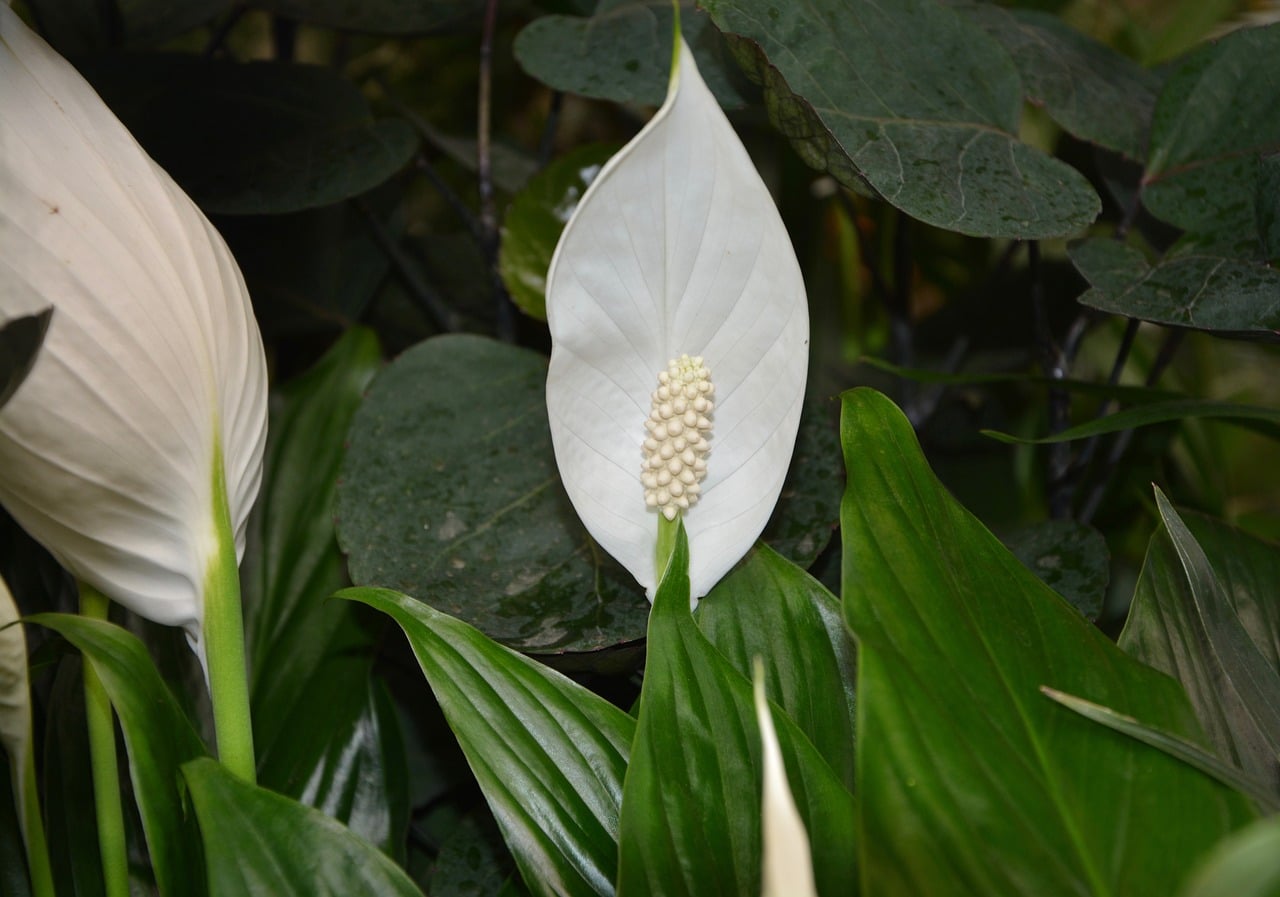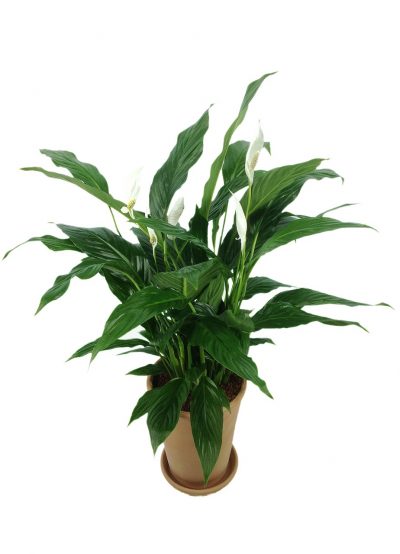
Spatiphyllum is a popular, hardy houseplant that can live for several years with minimal care. It also has a fairly high ornamental value, especially when it is in bloom: the soft colors of its inflorescence stand out against the bright green of its leaves in a spectacular way.
So, whether you don't have much experience taking care of green or what you want is a beautiful plant with which to decorate your home, then you will know what are the care of the spatifilo.
Spatiphyllus care
The spatifilo is a precious plant, which is grown mainly indoors. Its bright dark green leaves and that white inflorescence make it one of the most demanded by all those who seek to enjoy a plant that is quite easy to care for at home. Therefore, below we will tell you how to keep it healthy all year round:
Location

Interior
The spatifilo is a beautiful plant that can be grown without problems indoors in low light. Even so, it is important that we know that to flourish it will be necessary to take it to a very bright room and that we place it in a corner where sunlight does not reach it directly or through a window. In this way, we will prevent it from burning.
Likewise, we must know that drafts and sudden changes in temperature can harm you seriously.
Body exterior:
If you want to have it abroad, you have to know that grows well in places where the sun does not reach it directly, for example under tree branches or on shady balconies. Its roots are not invasive, so it is perfect to have it together with other plants of more or less the same height, either in the ground or in planters (in pots it is better to plant individually so that it can develop normally) .
It is important that you keep in mind that does not resist frost. In those regions where there are very weak and occasional frosts of up to -2ºC, they are seen a lot at the entrances of houses, and they are fine, but if those same plants were unprotected they would surely die. Therefore, if the weather is cool or cold at some point, it is highly advisable to keep it indoors until spring returns.
Irrigation and fertilizer
The frequency of irrigation will depend on the season in which we are. For instance, if it is summer it is advisable to water twice a week; instead, the rest of the year will be watered once a week or every ten days. When in doubt, check the moisture of the soil or substrate, inserting a thin wooden stick, or with a digital moisture meter.
Always use soft water (without lime) and remove the excess water from the dish ten minutes after watering to prevent the roots from rotting. Likewise, it is necessary to avoid putting it in a container without holes, as any stagnant water would also damage its root system.
We can take advantage of in spring and summer to pay it with a liquid universal fertilizer, following the indications specified on the product packaging. Another more natural option is to fertilize it with guano (liquid), or with mulch or compost if it is in the garden.
Planting or transplanting time

In order for the spatifilo to continue growing, it will normally be advisable to change the pot. every two or three years, during spring. The new container has to be about three or maximum four centimeters wider and deeper than the old one.
If you want to plant in the garden, it must also be done in spring, when the minimum temperature is minus 15 degrees Celsius. Make a planting hole of about 50 x 50cm, fill it with universal substrate mixed with perlite in equal parts, and plant your spatiphyllum in the center, ensuring that it is neither too high nor too low; his thing is that the soil or root ball bread is just 1-2 centimeters below the ground level.
Pests
The spatifilo can have basically three pests:
- Mites: they are tiny parasites, less than 0,5 cm long, that feed on the cells of the leaves. Some, like the Red spider, they weave cobwebs, which is why they can be quickly identified.
They are fought with acaricides. - Aphids: they are very small parasites too, which feed on the sap of leaves and flowers. They can be yellow, greenish, brown or blackish.
They are fought with chlorpyrifos, or with natural insecticides such as neem oil (for sale here) or potassium soap (for sale here). - White fly: it is a small white winged insect that feeds on the sap of the leaves.
You can fight it with the same insecticides that you use for aphids.
Management
When overwatered, the spatyphyll becomes vulnerable to fungi, such as Phytopthora, Cylindrocladium, Cercospora, or Colleotricum. The most common symptoms are:
- Brown spots on leaves
- Chlorotic spots on the leaves
- Leaf and root rot
- Growth slowdown
- 'Sad' appearance
They are fought with fungicides such as Aliette, whose active material is Fosetil-Al, and by cutting the affected parts. Likewise, there is reduce the risks.
Rusticity
The spatifilo is a tropical plant, very sensitive to cold and frost. The minimum temperature that it supports is 0 degrees, as long as it rises again quickly.
Problems that Spatiphyllum can have
It is a fairly easy plant to care for, but sometimes, and especially if it is kept indoors, problems can arise:
Does not bloom
When it does not bloom, it is common to worry. The reasons are various:
- The pot has become too small: remember to transplant it to a larger one every 2 years.
- Lack of light: to be able to flourish it needs to be in a bright place.
- Lack of nutrients: it is important to pay it from spring to summer.

Leaves that lose color
It may be or because it is in an area where the light hits it directly, in which case you will have burns on the leaves, or that it is in a too dark. In the latter case, they could be whiter.
Move it to a bright place, but without direct sun.
The plant is withered, 'sad'
It is usually because lack of water. Do not hesitate to take the pot and immerse it in a basin of water for half an hour, until the soil has been completely moistened.
If it is in the garden, make a tree around it so that when watering does not drain the water, and add at least 2-4 liters depending on the size of the plant.
Dry leaf tips
It can be excess compost or fertilizer, or drafts. You must follow the directions specified on the fertilizer or fertilizer packaging to avoid causing an overdose, and you should also keep away from air conditioning and any draft.
Characteristics of the spatifilo

The plant that we know as the spatifilo, the peace flower, the candle of the wind or the cradle of Moses, is a herb native to the tropical jungles of America. Its leaves are dark green, smooth, with a length of about 40 centimeters.
During spring and summer they produce very beautiful and elegant flowers formed by a modified white leaf (bract).
Where to buy?
You can get it from here:
I hope that with these tips, your plant looks and is beautiful 🙂.

Hello, apparently I have a statuary ... well they didn't give it to me, it has white flowers but the leaves have two green ones ... the point is how can I know which plant it is? 2 ... I eat it to revive it is that I take it out in the sun, and it seems to be a spatiphilium.
Hi Monique.
The newer leaves are lighter green in color. Anyway, if you want you can upload a photo of your plant to tinypic, imageshack or our Telegram group and we will tell you.
It is not a sun plant. It must be protected from the star king, otherwise its blades would burn.
A greeting.
I have a nice diffenvaccia, well I had, the leaves turned black and the plant, although new leaves are being born from below, the leaves are falling and it is not leafy. I have had it for several years at the entrance of the house and it is shining in the afternoon sun. Will it be able to recover?
Thanks for your reply.
Hello Monica.
Have you ever changed the pot? If you haven't, I recommend doing it in spring so that it can have better growth and development.
It is also advisable to remove it from the window and fertilize it with a universal liquid fertilizer (sold in nurseries ready to use) following the instructions specified on the package.
A greeting.
My Espanfilo's leaves are crumpling and falling down.
Hello Antoliano.
How often do you water it? In winter you have to water it once or twice a week, and every 3-4 days the rest of the year.
If it doesn't improve like this, write us again.
A greeting.
Hello: I have a spatiphile that we bought two or three weeks ago. It had two flowers, which dried up and now the whole plant is like languid, with some yellow leaves. I cut off the yellow leaves, and now others are yellowing, and the whole plant is still languid. It's summer here (super hot these days) and that's why we've left it indoors, in a well-ventilated room without direct sun. These days, and as it has deteriorated so much, we take it outside at night and re-enter it before the sun hits it. Right now, we have her in a bright room, with air conditioning. We spray it often and space out the irrigations. Still, it remains languid, without major changes. Could it be the heat that has it so bad?
Hello, Gloria.
Spatiphilus withstands temperatures of 30-35ºC well, provided it is in semi-shade and receives water (about three times a week in summer).
However, you do not like drafts inside the home, such as air conditioning.
It is also important to stop spraying it, since the water that remains on the leaves clogs the pores, preventing you from breathing.
A greeting.
Monica, my plant is the same, I have another beautiful one, huge for more than 10 years and without any problem and they gave me one and it is poor, with the leaves down, I water it, it has moisture in the soil (little) and it does not The sun gives, yes the light, what can happen to it? I planted it a week after giving it to me from a very small pot to a medium one and it no longer changed its face, only for the worse, can you help me? I know they are strong.
Thank you very much
Hello, Martha.
When you water, do you do it until the water runs out of the drainage holes?
You can add a little liquid fertilizer (guano is highly recommended for being rich in nutrients), reducing the dose by half. This is how it should improve.
A greeting.
Hello, my plant is with the tips of the leaves withered and the flowers some have black spots and another wilted, there are also two that turned green as if the dye of the leaves had been paid to the flowers, what could it be? How do I solve it?
Hi Sere.
How often do you water it? From what you count, it seems that he has received too much water.
I recommend treating it with an antifungal product and watering less, once or twice a week.
Greetings.
Hello, my spatiphilium does not make flowers, I have it for quite a few years and it will have put flowers a couple of times, what could be due to, also commenting that the tips of the leaves turn brown and those that are born new too. All the best.
Hello Fuensanta.
You might need a larger pot if you've never transplanted it, or fertilized it.
If you want, send us a photo by Facebook and we tell you.
A greeting.
Good afternoon. My name is Florence, the information you have given has been useful to me. I have a plant like this for 1 year. At first its leaves were bright green and then they have lost it. I have noticed it sad as it has fallen, I tried to move it to a place, where it does not receive direct light and moderate the irrigation but I have not noticed any changes. It is like very open from the center and like the fallen leaves. I hope some advice that allows me to help her improve. Thanks a lot.
Hello Florence.
From what you count, it may have been watered too much. If you have a plate under it, or if it is planted in a pot without holes, it is better to have it in a pot with holes and without a plate.
Water it 2-3 times a week in summer, and once a week or every XNUMX days the rest of the year.
And patience. Sometimes plants can take time to show improvement.
Regards!
Thanks for the information ... apparently it was killing my little plants (I have it on the terrace and outdoors)
Great that we have been able to help you. If you have any questions, write us again 🙂
Mine is with dry ends. All open as sad. I have it in a pot and with a plate
Hi miguel.
And are you removing the water from the plate? If you don't remove it, it probably has excess water. So I recommend you suspend watering until you see that the land is dry or almost.
If you have any doubts, please contact us.
Regards!
Thank you very much, your advice has served me wonderfully. Some I already put it into practice, I hope to save some plants.
Perfect Norma. If you have questions, contact us. 🙂
Thank you very much for the information, I just bought a spatiphile and needed to know how to take care of it. I will take into account all the advice, very clear and precise by the way. Hope I get lucky with this plant.
Enjoy your spatiphile very much, Adriana.
If you have any questions, contact us 🙂
Greetings.
Hello. My name is María Teresa.
I have a pot of spatiphyllum. I bought it a week or two ago and it is very pretty. But I am observing that the white leaves wither, they get ugly. I don't know what can happen to him.
It is in a good place, as I have read from the other queries.
The plant is in the same pot in which I bought it. Maybe I should transplant it to a bigger one because I see it very drowned. But what I would like to know is why the little white leaf withers.
I really like this plant and I would not want to lose it. Please advise me. Thanks a lot.
Hello Maria Teresa.
The white leaves are actually flowers, and it is normal for them to wilt 🙂
Do not worry. The important thing is that it grows, taking out new -green- leaves, and next year it will bloom again.
Spring will be a good time to plant it in a slightly larger pot; now that we are in winter it is better not to change it.
Greetings.
Thanks for the information, a query, when the flower ages it turns green, do we have to cut it?
Hi Nora,
When it starts to dry (turn brown) you can cut it, yeah 🙂
Greetings.
My spatefilium, okay, it has six flowers, but lately the boas have some dark spots and the leaf almost remains behind parentheses. Please can you tell me that it could be.
Hello Jose.
Dark spots can be due to multiple causes:
-sun or direct light (or through a window)
-excess humidity (if its leaves are sprayed with water)
-or presence of pests or diseases
Therefore, we need to know how often you water it more or less, and where you have it in order to help you better.
Regards!